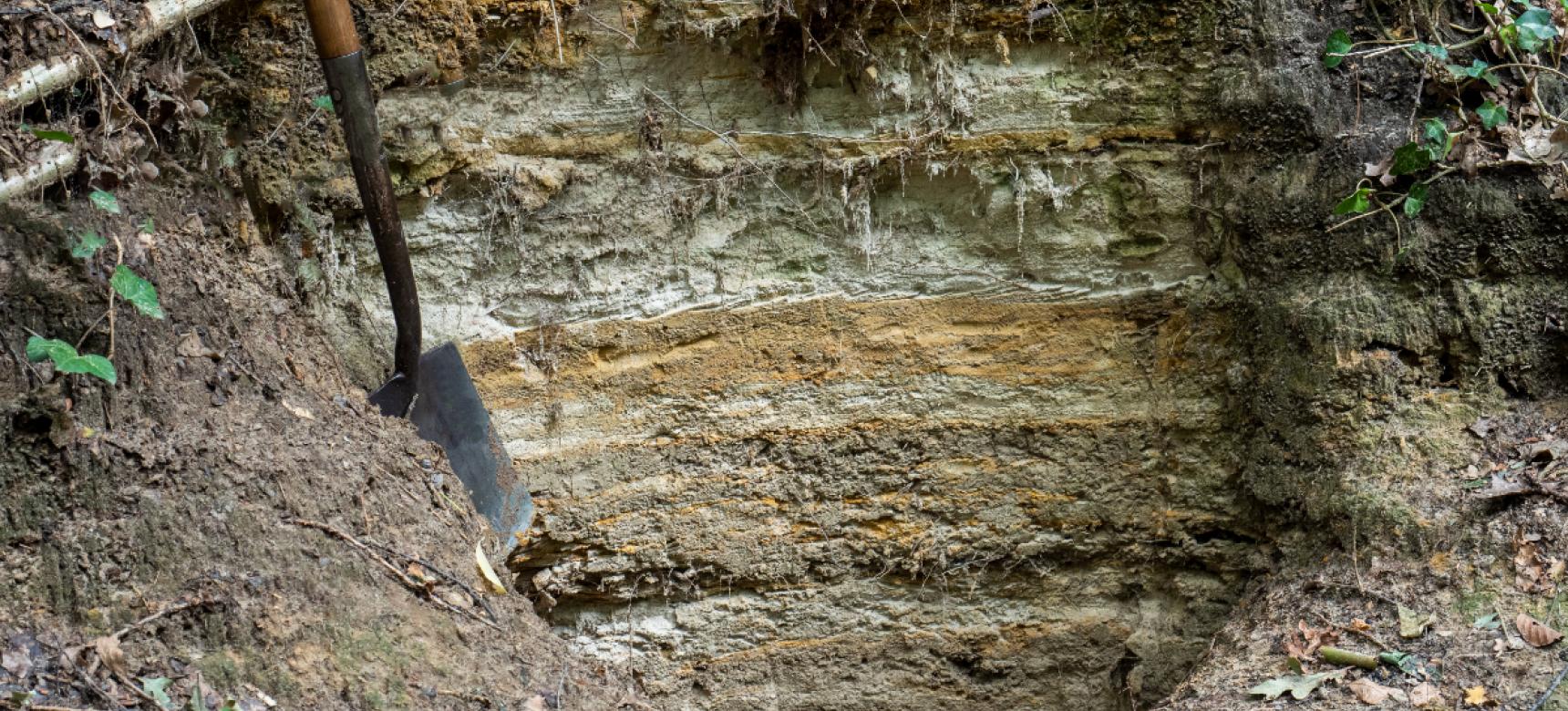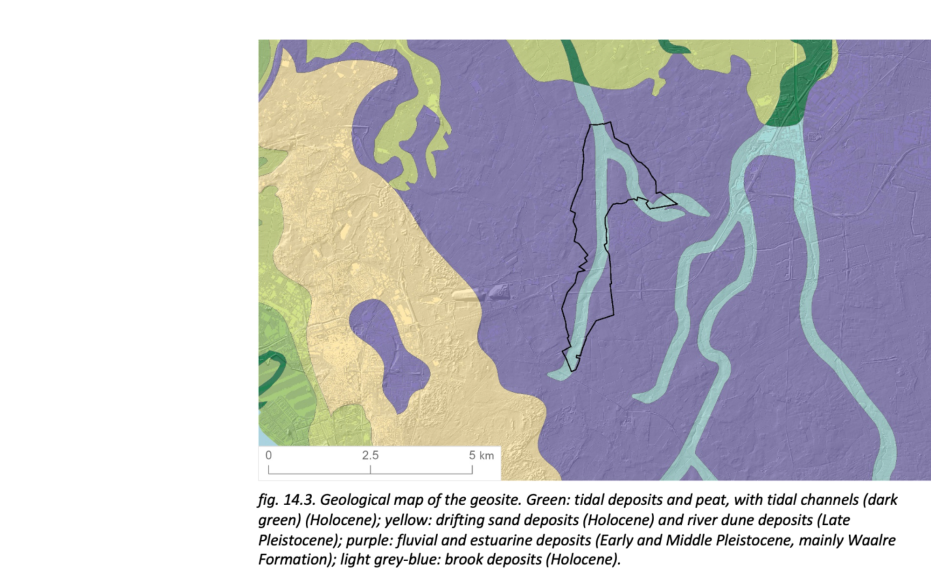Erosion during the Pleistocene ice ages
After the deposition of the Waalre Formation, the courses of Rhine and Meuse moved out of the area. From about 1 million years ago, West Brabant gradually rose and most of the deposits from the Scheldt Basin were eroded again during successive ice ages. In the Smalle Beek area, remnants of these old Scheldt deposits of several meters thick still occur here and there. Of the long period of 1.5 million years between these Early Pleistocene deposits and the cover sand from the last ice age, usually only a thin layer of gravel remains at the interface between the two. This gravel layer is the last remnant of the thick packages deposited by the rivers from the Scheldt Basin on top of the Waalre Formation more than a million years ago. The gravel, also called "Scheldt gravel," remained after the finer parts of these deposits were washed away by streams or swept away by wind.

